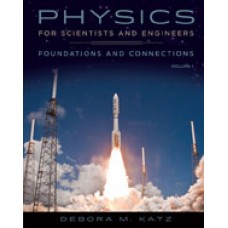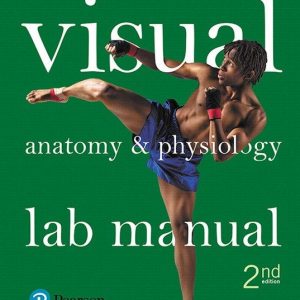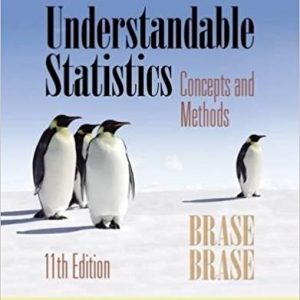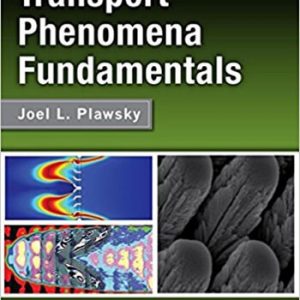This is completed downloadable of Solution Manual for Physics for Scientists and Engineers Foundations and Connections, Volume 1, 1st Edition

Product Details:
- ISBN-10 : 0534466753
- ISBN-13 : 978-0534466756
- Author:
Master physics with Debora Katz’s new, ground-breaking calculus-based physics program, PHYSICS FOR SCIENTISTS AND ENGINEERS: FOUNDATIONS AND CONNECTIONS. Dr. Katz’s one-of-a-kind case study approach enables you to connect math and physics concepts in a modern, interactive way. By leveraging physics education research (PER) best practices and her extensive classroom experience, Debora Katz addresses the areas where students like you struggle the most: linking physics to the real world, overcoming common preconceptions, and connecting the concept being taught with the mathematical steps to follow. How Dr. Katz deals with these challenges with case studies, student dialogues, and detailed two-column examples distinguishes this text from any other and will assist you in going beyond the quantitative to master your physics course.
Table of Content:
- Part I: Classical Mechanics
- Ch 1: Getting Started
- 1-1 Physics
- 1-2 How are Laws of Physics Found?
- 1-3 A Guide to Learning Physics
- 1-4 Solving Problems in Physics
- 1-5 Systems of Units
- 1-6 Dimensional Analysis
- 1-7 Error and Significant Figures
- 1-8 Order-of-Magnitude Estimates
- Ch 2: One-Dimensional Motion
- 2-1 What is One-Dimensional Translational Kinematics?
- 2-2 Motion Diagrams
- 2-3 Coordinate Systems and Position
- 2-4 Position-versus-Time Graphs
- 2-5 Displacement and Distance Traveled
- 2-6 Average Velocity and Speed
- 2-7 Instantaneous Velocity and Speed
- 2-8 Average and Instantaneous Acceleration
- 2-9 Special Case: Constant Acceleration
- 2-10 A Special Case of Constant Acceleration: Free Fall
- Ch 3: Vectors
- 3-1 Geometric Treatment of Vectors
- 3-2 Cartesian Coordinate Systems
- 3-3 Components of a Vector
- 3-4 Combining Vectors by Components
- Ch 4: Two- and Three-Dimensional Motion
- 4-1 What is Multidimensional Motion?
- 4-2 Motion Diagrams for Multidimensional Motion
- 4-3 Position and Displacement
- 4-4 Velocity and Acceleration
- 4-5 Special Case of Projectile Motion
- 4-6 Special Case of Uniform Circular Motion
- 4-7 Relative Motion in One Dimension
- 4-8 Relative Motion in Two Dimensions
- Ch 5: Newton’s Laws of Motion
- 5-1 Our Experience with Dynamics
- 5-2 Newton’s First Law
- 5-3 Force
- 5-4 Inertial Mass
- 5-5 Inertial Reference Frames
- 5-6 Newton’s Second Law
- 5-7 Some Specific Forces
- 5-8 Free-Body Diagrams
- 5-9 Newton’s Third Law
- 5-10 Fundamental Forces
- Ch 6: Applications of Newton’s Laws of Motion
- 6-1 Newton’s Laws in a Messy World
- 6-2 Friction and the Normal Force Revisited
- 6-3 A Model for Static Friction
- 6-4 Kinetic and Rolling Friction
- 6-5 Drag and Terminal Speed
- 6-6 Centripetal Force
- Ch 7: Gravity
- 7-1 A Knowable Universe
- 7-2 Kepler’s Laws of Planetary Motion
- 7-3 Newton’s Law of Universal Gravity
- 7-4 The Gravitational Field
- 7-5 Variations in the Earth’s Gravitational Field
- Ch 8: Conservation of Energy
- 8-1 Another Approach to Newtonian Mechanics
- 8-2 Energy
- 8-3 Gravitational Potential Energy near the Earth
- 8-4 Universal Gravitational Potential Energy
- 8-5 Elastic Potential Energy
- 8-6 Conservation of Mechanical Energy
- 8-7 Applying the Conservation of Mechanical Energy
- 8-8 Energy Graphs
- 8-9 Special Case: Orbital Energies
- Ch 9: Energy in Nonisolated Systems
- 9-1 Energy Transfer to and from the Environment
- 9-2 Work Done by a Constant Force
- 9-3 Dot Product
- 9-4 Work Done by a Nonconstant Force
- 9-5 Conservation and Nonconservative Forces
- 9-6 Particles, Objects, and Systems
- 9-7 Thermal Energy
- 9-8 Work-Energy Theorem
- 9-9 Power
- Ch 10: Systems of Particles and Conservation of Momentum
- 10-1 A Second Conservation Principle
- 10-2 Momentum of a Particle
- 10-3 Center of Mass Revisited
- 10-4 Systems of Particles
- 10-5 Conservation of Momentum
- 10-6 Case Study: Rockets
- 10-7 Rocket Thrust: An Open System (Optional)
- Ch 11: Collisions
- 11-1 What is a Collision?
- 11-2 Impulse
- 11-3 Conservation during a Collision
- 11-4 Special Case: One-Dimensional Inelastic Collisions
- 11-5 One-Dimensional Elastic Collisions
- 11-6 Two-Dimensional Collisions
- Ch 12: Rotation I: Kinematics and Dynamics
- 12-1 Rotation versus Translation
- 12-2 Rotational Kinematics
- 12-3 Special Case of Constant Angular Acceleration
- 12-4 The Connection between Rotation and Circular Motion
- 12-5 Torque
- 12-6 Cross Product
- 12-7 Rotational Dynamics
- Ch 13: Rotation II: A Conservation Approach
- 13-1 Conservation Approach
- 13-2 Rotational Inertia
- 13-3 Rotational Kinetic Energy
- 13-4 Special Case of Rolling Motion
- 13-5 Work and Power
- 13-6 Angular Momentum
- 13-7 Conservation of Angular Momentum
- Part II: Mechanics of Complex Systems
- Ch 14: Static Equilibrium, Elasticity, and Fracture
- 14-1 What is Static Equilibrium?
- 14-2 Conditions for Equilibrium
- 14-3 Examples of Static Equilibrium
- 14-4 Elasticity and Fracture
- Ch 15: Fluids
- 15-1 What is a Fluid?
- 15-2 Static Fluid on the Earth
- 15-3 Pressure
- 15-4 Archimedes’s Principle
- 15-5 Measuring Pressure
- 15-6 Ideal Fluid Flow
- 15-7 The Continuity Equation
- 15-8 Bernoulli’s Equation
- Ch 16: Oscillations
- 16-1 Picturing Harmonic Motion
- 16-2 Kinematic Equations of Simple Harmonic Motion
- 16-3 Connection with Circular Motion
- 16-4 Dynamics of Simple Harmonic Motion
- 16-5 Special Case: Object-Spring Oscillator
- 16-6 Special Case: Simple Pendulum
- 16-7 Special Case: Physical Pendulum
- 16-8 Special Case: Torsion Pendulum
- 16-9 Energy in Simple Harmonic Motion
- 16-10 Damped Harmonic Motion
- 16-11 Driven Oscillators
- Ch 17: Traveling Waves
- 17-1 Introducing Mechanical Waves
- 17-2 Pulses
- 17-3 Harmonic Waves
- 17-4 Special Case: Transverse Wave on a Rope
- 17-5 Sound: Special Case of a Traveling Longitudinal Wave
- 17-6 Energy Transport in Waves
- 17-7 Two- and Three-Dimensional Waves
- 17-8 Refraction and Diffraction
- 17-9 The Doppler Shift
- 17-10 The Wave Equation
- Ch 18: Superposition and Standing Waves
- 18-1 Superposition
- 18-2 Reflection
- 18-3 Interference
- 18-4 Standing Waves
- 18-5 Guitar: Resonance on a String Fixed at Both Ends
- 18-6 Flute: Resonance in a Tube Open at Both Ends
- 18-7 Clarinet: Resonance in a Tube Closed at One End and Open at the Other End
- 18-8 Beats
- 18-9 Fourier’s Theorem
- Ch 19: Temperature, Thermal Expansion, and Gas Laws
- 19-1 Thermodynamics and Temperature
- 19-2 Zeroth Law of Thermodynamics
- 19-3 Thermal Expansion
- 19-4 Thermal Stress
- 19-5 Gas Laws
- 19-6 Ideal Gas Law
- 19-7 Temperature Standards
- Ch 20: Kinetic Theory of Gases
- 20-1 What is the Kinetic Theory?
- 20-2 Average and Root-Mean-Square Quantities
- 20-3 The Kinetic Theory Applied to Gas Temperature and Pressure
- 20-4 Maxwell-Boltzmann Distribution Function
- 20-5 Mean Free Path
- 20-6 Real Gases: The Van der Waals Equation of State
- 20-7 Phase Changes
- 20-8 Evaporation
- Ch 21: Heat and the First Law of Thermodynamics
- 21-1 What is Heat?
- 21-2 How Does Heat Fit into the Conservation of Energy?
- 21-3 The First Law of Thermodynamics
- 21-4 Heat Capacity and Specific Heat
- 21-5 Latent Heat
- 21-6 Work in Thermodynamic Processes
- 21-7 Specific Thermodynamic Processes
- 21-8 Equipartition of Energy
- 21-9 Adiabatic Processes Revisited
- 21-10 Conduction, Convection, and Radiation
- Ch 22: Entropy and the Second Law of Thermodynamics
- 22-1 Second Law of Thermodynamics, Clausius Statement
- 22-2 Heat Engines
- 22-3 Second Law of Thermodynamics, Kelvin-Planck Statement
- 22-4 The Most Efficient Engine
- 22-5 Case Study: Refrigerators
- 22-6 Entropy
- 22-7 Second Law of Thermodynamics, General Statements
- 22-8 Order and Disorder
- 22-9 Entropy, Probability, and the Second Law
- Appendix A: Mathematics
- Appendix B: Reference Tables
- Periodic Table of the Elements
- Answers to Concept Exercises and Odd-Numbered Problems
- Index





